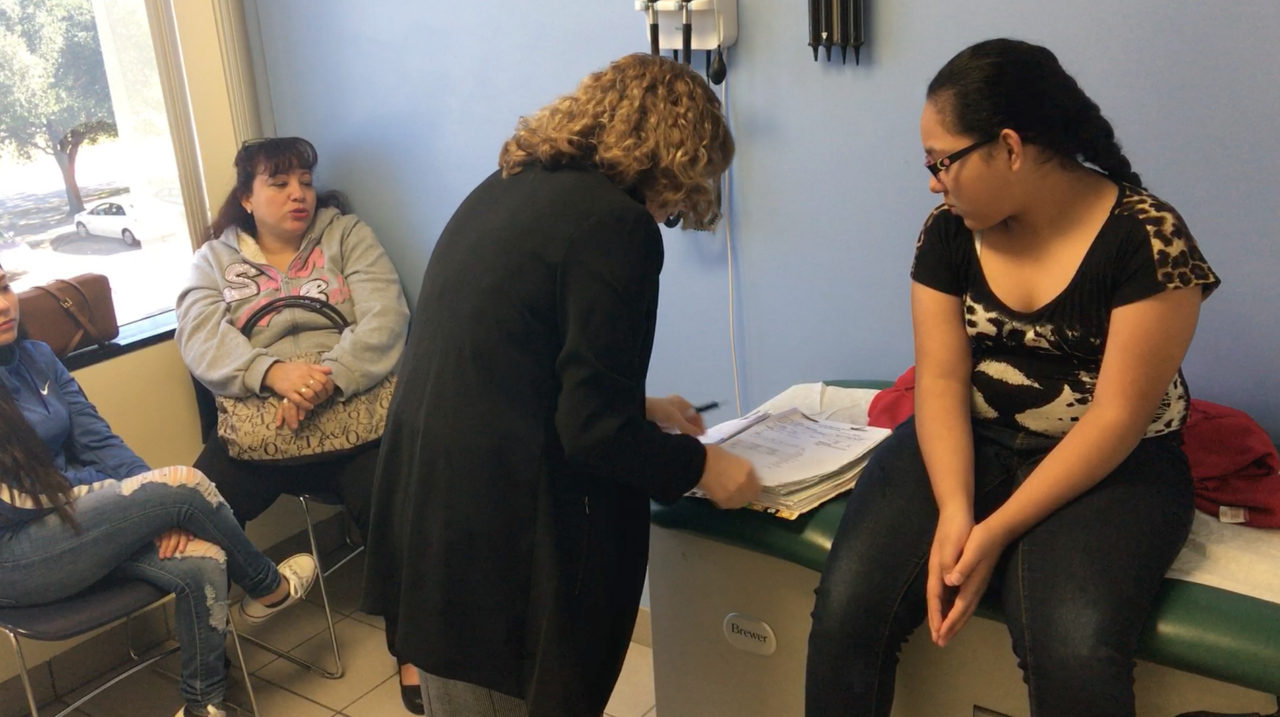

Dr. Ann Barnes
EHF's President and CEO
Across Texas, community clinics are often the first — and sometimes only — place families turn to for care. Medicaid helps make that possible. It’s how clinics provide not just medical treatment, but the full range of services people need to stay healthy: prenatal support, diabetes education, mental health care, and more.
Proposed federal cuts to Medicaid funding — up to $880 billion — would put all of that at risk. These cuts threaten to close clinic doors, widen preventable health disparities, and weaken the very system that so many Texans rely on to live healthier lives. These cuts would deepen long-standing inequities in our health care system and push essential care further out of reach for those already facing the steepest barriers.
While data and dollars paint a clear picture of what’s at stake if Medicaid funding is cut, the real story is about the people who will feel the consequences first hand.
First, the data:
Medicaid is the largest single source of federal funding for Texas’s health care system, bringing in billions of dollars annually. It’s how community health centers and children’s hospitals keep their doors open — and how millions of Texans, insured or not, access essential care. Almost 20% of the state’s overall population is covered by Medicaid, including half of all children.
Yet, Texas has one of the most restrictive Medicaid programs in the country. Despite these limitations, Medicaid remains a cornerstone of health care in Texas, especially for those who face the most barriers to good health:
- Children, who make up the largest share of enrollees
- Pregnant women, many of whom rely on Medicaid for prenatal and postpartum care
- Seniors in nursing homes, who account for a major share of Medicaid spending
- And people with disabilities — roughly 1 in 3 Texans with disabilities receive Medicaid or
At a recent roundtable hosted by Rice University’s Baker Institute for Public Policy, the message from community health center leaders was crystal clear: Medicaid cuts would hit Texas harder than almost any other state — and would fall most heavily on those already at a disadvantage.
Take HOPE Clinic in Houston, a Federally Qualified Health Center and longtime Episcopal Health Foundation grantee. About 40% of its patients rely on Medicaid health insurance. But that program accounts for 60-70% of the clinic’s overall funding. Why? Because Medicaid also pays for the wraparound services that patients rely on. Things like translation, care navigation, and eligibility assistance.
“A cut in Medicaid would decimate community health centers,” said Dr. Andrea Caracostis, HOPE Clinic’s CEO. “We absolutely could not keep our doors open.”
And again, children would be among those most affected. More than 90% of the children and 80% of the pregnant women who come to HOPE Clinic are covered by Medicaid.
“It’s the story of people,” Dr. Caracostis explained. “What are we going to do when we’re delaying basic care for kids and moms? So, 10 years down the road we’ll be paying three times more in complicated health issues that this population will develop. It’s the story of helping our legislators understand the wide impact that decisions like this make over time.”
That’s not just a problem for Medicaid patients. Community health centers serve 1 in 16 Texans, providing care to more than 1.8 million people across the state, They’re the backbone of care for families across the state. When that backbone breaks, the entire system feels it.
That’s before we even begin to count the ripple effects of untreated illness. Diabetes, for example, is one of the most common — and most expensive — chronic conditions in Texas. Medicaid helps fund preventive care, education, nutrition support, and more. Cut that, and we’ll end up spending many times more on health complications down the line.
It’s not just about less funding. Proposed changes to Medicaid like per capita caps, work requirements, and limits on provider taxes are all designed to shift the financial burden to states. That leaves Texas with three bad options: raise taxes, cut other programs like education and infrastructure, or slash Medicaid even further.
None of this is hypothetical. It’s already under discussion in Washington and driven by the narrative that Medicaid is bloated with fraud or waste. But Medicaid is already the lowest payer in the health system. It’s been squeezed for years. There is no $880 billion cushion to trim.
The bottom line: people and their health will be the ones directly impacted by Medicaid funding cuts.
Texas Medicaid Works tells the stories of children, families, mothers, and others who have experiences with Medicaid coverage and what may be at stake if Texans lose that coverage.
Toddlers like Winslow who were born with a rare heart disease and depend on Medicaid for specialized nursing care at home.
Families like the Eidsons with three children who are battling diabetes and depend on Medicaid to help guarantee and coordinate their health care, giving them tools to keep their diabetes in check.
And working moms like Evelin who delivered premature twins, and received invaluable home breast-feeding nursing support and help with non-medical needs like ready-to-eat meals and fresh produce.
Research consistently shows that Medicaid coverage leads to improved health outcomes.
The opportunity for Medicaid in Texas is not cutting funding but making smarter investments. Medicaid is a connection to primary care, mental health services, maternal health, and more. It’s about treating health needs before they turn into health emergencies. It’s about keeping families afloat and our entire system stable.
We can’t build a healthier Texas by pushing more people out of care. We build it by expanding access to the very programs that are keeping it together.